#developmental prototype
Photo




Porsche 918 Spyder Rolling Chassis, 2012. Presented to selected journalists during the development of the 918
#Porsche#Porsche 918#Porsche 918 Spyder Rolling Chassis#prototype#test vehicle#2012#developmental prototype#hypercar#hybrid#experimental car
155 notes
·
View notes
Text

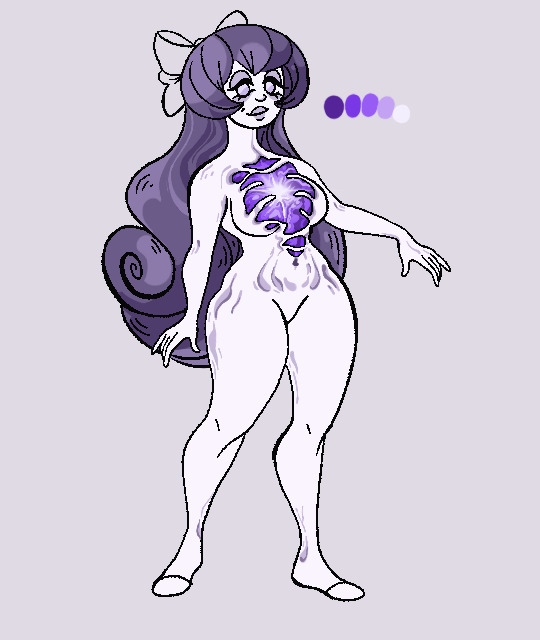

💜// baby’s first prototype designs! stumbled upon it again today— and despite selling my soul to otherworldly forces to draw those shoes, i scrapped this rendition very quickly. very much ‘almost-there-but-not-quite’ drafts.
(also haven't quite nailed down how to render ectoplasm how I like, and any past renditions was waaay back when it resembled fire instead of electricity. one day.......)
even w/ her ‘finalized’ design, there’s still tweaks i’d love to make for both her AND doc (i feel like doc’s silhouette can be pushed further & i’d like to make ophelia a touch more haunting…also…….she’d wear kitten heels)
more fun cut content/prototype stuff below cut :3c
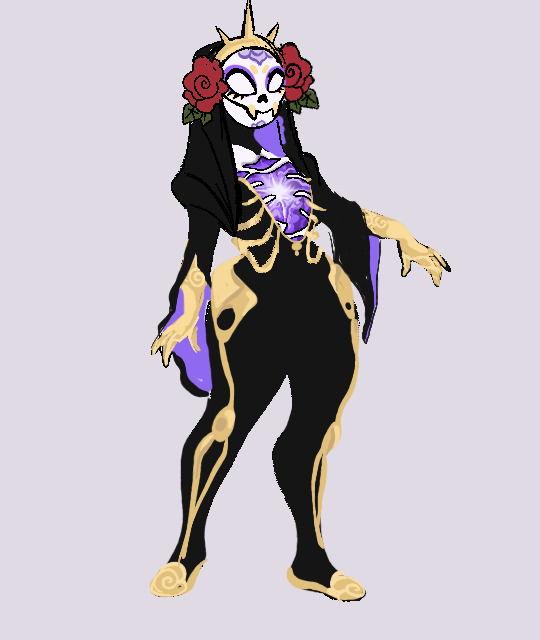

initially the above was supposed to be current-day crypt-walker supersuits, but they no longer match ophelia's personality so: in the recycle bin she goes
and below are two color palettes that were dropped! weeeeee developments! (lots of copy-pasting here, work smarter not harder when coloring ideas)
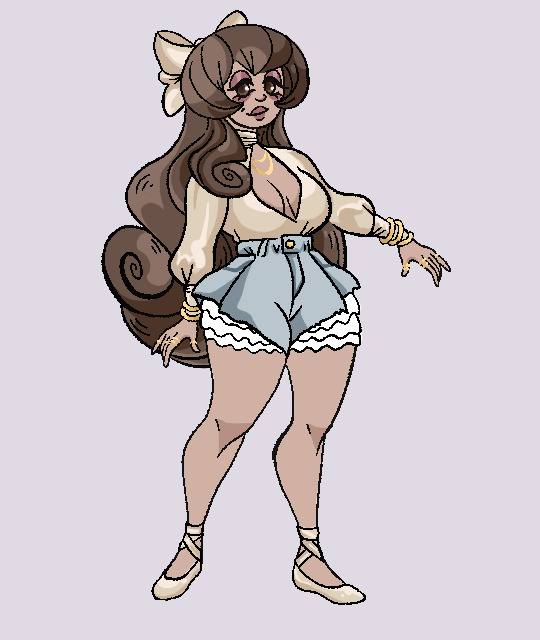

#👽 … ooc#🎨 … mun art#//behind the scenes design/developmental stuff is always fun for me to look back on so hopefully it's neat for u too#//mine are... generally not the most interesting to look at since im usually too messy or cut corners to save time (a la copy pasting)#//NOW if ur asking where doc's prototype designs are they are lost to the aether#//(scattered across my room on various scratch papers)
18 notes
·
View notes
Text

Natasha Romanoff didn't bat her eye at experimental new tech – it was part of the job, after all. So when the SHIELD labrats asked her to test-drive a new holographic simulation... "Why the hell not," was her quick and quippy reply. It was an early developmental prototype of a platform called the Framework, designed by some young SHIELD recruit as a consequence-free space for training simulations.
Seemed innocent enough to give it a whirl.
And again, for Nat, when the training went off the rails and she found herself trapped in an unstable simulated reality... she wasn't surprised. The techs in the surface world would bring her back eventually – all she had to do was stay sane in this troublesome virtual world in the meantime.
As the system continued to glitch out and threw new bugs her way, she was surprised to realize that not all of them were dangerous. When the program duplicated her, that's when she raised her first eyebrow. Now, having been tripled, Nat started to worry.
Although these other Nat simulations seemed pretty laid back, despite her initial concerns. And trapped in a room with three of her, all eager to pass the time... Natasha found herselves game for another type of... experiment.
* * * * *
I was really happy with my first Nat attempt – Love, Natasha – but couldn't help but do more for our girl. I wanted to really give her Avengers-era character a chance to shine 😈.
#natasha romanoff#fake movie poster#selfcest#wlw#ai art#ai artwork#ai generated#ai image#mcu#mcu headcanons#scarlett johansson#natasha mcu#natasha romanov#natasha poly#natasha x reader#black widow#avengers#agents of shield#framework#ai fanart
60 notes
·
View notes
Text
Gyroslug Machine Pistol Mk6 (aka "Smart Pistol"/"Gunslinger's Best Friend")

A 7.5mm gyroslug machine pistol issued to graduates of the SLDF Gunslinger program, the Mk6 GMP is used either as a standard sidearm, or more commonly, as a component of a BattleMech SERE Kit. When stored in a SERE kit, the pistol is located under or on the back of the standard ejection seat. For 'Mechs with Full Head Ejection, a specialized hardened compartment is placed within easy arm's reach of the pilot seat.
The MK6 exclusively fires guided gyroslug ammunition - no other rounds have been produced for the weapon - made with advanced Clantech. Compared to earlier developmental prototypes, the Mk6 features enhanced guidance capabilities, thanks to an AI targeting system linked directly to the gyroslug rounds. Combined with the smart targeting and adaptive recoil mitigation/redirection system, the AI targeting allows the pistol - in the hands of a skilled operator - to remain controllable and deadly even when firing in bursts.
Using a standard chemical propellant charge to fire the gyroslugs from the weapon prior to ignition, the Mk6 grants the projectiles significantly more kinetic energy than standard gyroslugs - thus allowing to perform more intensive maneuvering to successfully hit a locked target. The rounds are programmed to strongly bias center mass and head impacts. A Gunslinger in their jumpjet equipped PA(L) piloting armor can thus dart around the battlefield at speed, taking out dozens of enemy infantry if needed.
The pistol fires from 20 round (standard) or 30 round (extended) magazines at a burst fire rate of 900 rounds per minute. It possesses two semi-automatic firing modes:
The first, known by the Gunslingers as "dumbfire" mode, disables all smart-targeting and guidance systems of the pistol and ammunition, using the fuel of the gyroslugs as explosive filler. In this mode, it is capable of penetrating weak-points in battle armor suits, even Clan Elemental armor. The second semi-auto mode, known colloquially as "half-smart" mode, enables the targeting and guidance features, for long-range precision shots.
The pistol can be equipped with any of the 5 standardized SLDF pistol red dot sights via an adaptor plate system for easier target acquisition and follow-up shots than using the standard iron sights.
#battletech#mechwarrior#story event#tactical information#ooc: the new Gunslingers are basically Titanfall's Pilots crossed with the Knights of the Republic of the Sphere#crazy-mobility-having special forces commandos/Mech pilots all in one#who are also trained to be chivalric and such as a way to provide the new Star League with a source of role models/inspiration
21 notes
·
View notes
Text
What is the Welrod ?

The Welrod was a series of silent pistols featuring an integral suppressor meant for clandestine operations. It was developed c.1942-44 for use in the war by the British Special Operations Executive to be later produced covertly by BSA. The name itself comes from the town of Welwyn, Hertfordshire portemanteau’d with ‘rod’ for the shape of the weapon. Welwyn was the site of the SOE’s Station IX, a secret facility charged with weapon research and design which also gave birth to the Welbike (a folding Excelsior folding motorcycle), the Welgun (a folding 9mm submachine gun), the Welman (a one-man submarine) and the Welpen (a pen gun).
Welrod pistols were chambered in .32ACP and 9mm using respective Colt magazines turned into complete rubber-coated grips and downloaded to 5 rounds. They were manual repeaters using a bolt action operated using the knurl cap at the back of the gun’s receiver and a very simple push trigger. They were equipped with a grip safety to avoid accidental discharges. Effective range was about 5m without training up to 25m for well-aimed shots.
While an obviously piss-poor weapon to use on the battlefield, these pistols were designed and overspecialized for the express purpose of arming secret operatives and resistance members in occupied countries to quietly eliminate sentries for sabotage or assassination targets in populated areas. The large suppressor was much longer than the gun’s perforated barrel and encompassed the entire action, using baffles and rubber washers all to contain and slow down the gas release of a shot. This resulted in an incredibly low noise level of 73 decibels when fired. This could be further reduced by pressing the gun’s depressed muzzle cap into the target, at which point the gunshot would be completely inaudible among the chatter of a public space.
Due to the covert nature of its development, production and use, it’s hard to gauge the impact this gun had in World War 2, although we at least know that it was indeed used with at least a couple thousands making their way to Europe. Any plans for large-scale use of the weapon was dropped after witnessing the reprisal on civilian populations after the assassination of Reinhard Heydrich.
Despite its limited deployment in the war, the Welrod is to this day a pretty famous firearm for being one of the most quiet gun ever made, with most of its competition using either .22LR or highly customized rounds.
Related Vocabulary
The developmental history of the Welrod can be a bit confusing, here is a guide to differentiating the different models:
MkI .32ACP: initial prototype using a fixed magazine and a conventional bolt action, as well as a side-mounted thumb trigger.
MkII .32ACP: uses a Colt M1903 magazine for its grip, lacks a trigger guard, smooth top receiver cut.
MkIIA .32ACP: most common Welrod, slight modifications to the MkII, most noticeably has an angular receiver cut and shorter front sight blade.
MkI 9mm Para: further development of the MkII and MkIIA using .38 Colt magazines, with a removable silencer section leading to the front sight being moved backward. The only Welrod with a trigger guard.
151 notes
·
View notes
Text
On the Geneology of Liger Zoids
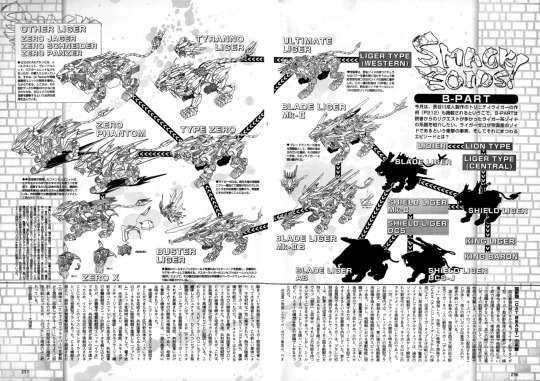
Here is a long post detailing the relationships between these zoids as I understand them.
So starting from the right-hand side of this chart, we have the older ligers/lion types. I assume that at least one of these types are mechanized versions of this->

which is from the continent of Delpoi, which was initially ruled entirely by the Helic Republic before a schism formed in the royal family that led to the first Helic Republic/Zenebus Empire war.

From this species came 2 machine beasts, one developed by each faction

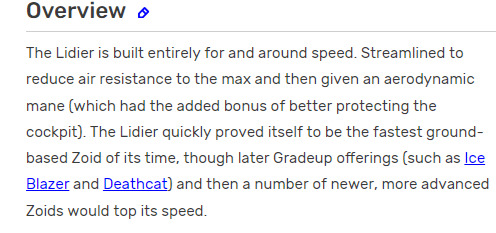
And, of course, our old standby,

Just going by the chart it seems like Zenebus never further developed their ligers, which is the complete opposite than the Helic Republic, who developed a new fuselage for the core type


And then improved upon the design with a 2nd iteration.


From this point onward the Kings seemed to be either phased out or just declared "good enough" and R&D centered squarely on the Shield Liger; I will focus on the linear Shieldy->Blades lineage here because to avoid bloating the post, I'll detail their off-shoots later.
So after the Shield Liger came...

After which came MK-II & MK-II B
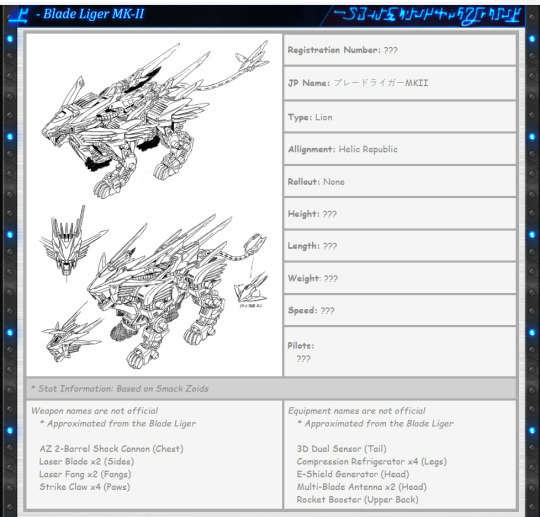
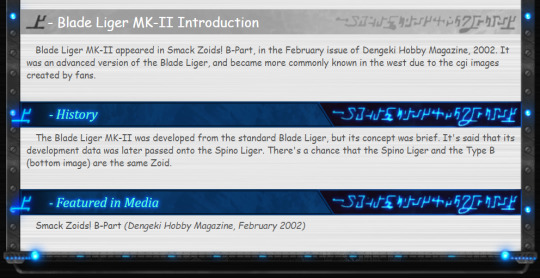
What really catches my attention is the construction of the laser blade mount-
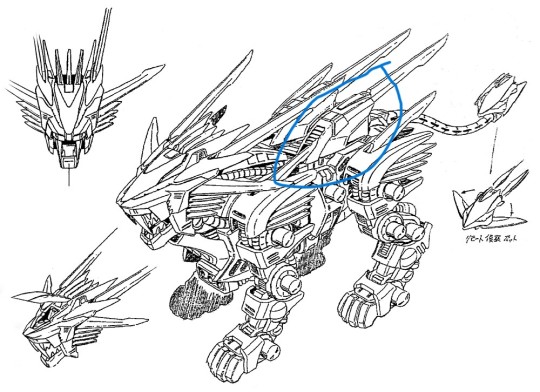
and its resemblance to->
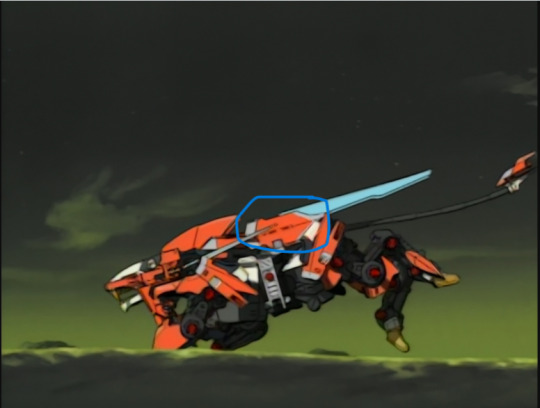
The high-output ion boosters on the blade arms of the Liger Zero Schneider. I can't be sure though, since I assume the weapons and equipment list only includes features common to all 3 versions.
So at this point the old Delpoian Ligers' core is deemed to be of insufficient strength by the Republican Army, which left them at a developmental dead end; the Imperial Army meanwhile has begun to develop a fuselage based on this-


From the western continent of Europa. Their prototype was stolen by the Republican Army and thus we got 2 versions of the resulting zoid:


These zoids were designed partly around the concept of the Changing Armor System (CAS), which makes the zoid suitable for a variety of different missions. I won't cover all the CAS units since I assume that most zoids fans are familiar with them, so I'll just be posting the versions that seem to have never left the hobby publications.
So first I will show the Imperial side,
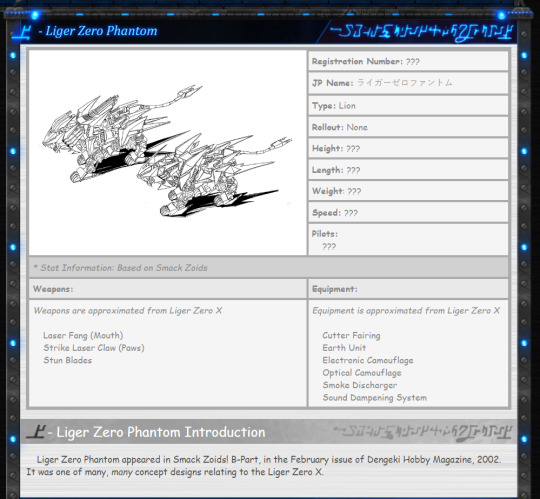

So basically the Empire took a very stealth based approach to their ligers.
Next, one of my very favorites <3
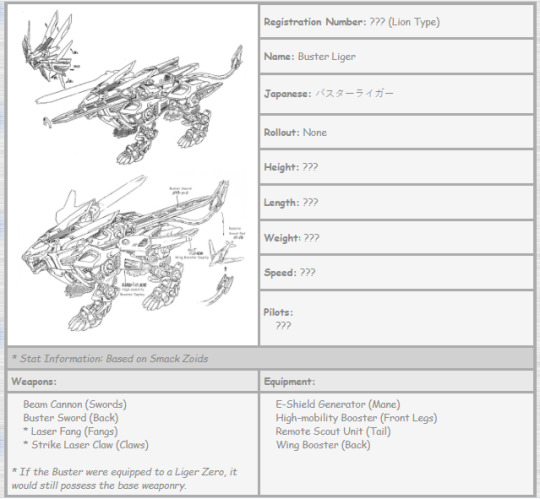

So firstly, I wonder what this zoids' top speed looks like. 2nd, those drill swords might be the most terror-inducing weapons on a Liger Zero beside the Panzer's homing missiles. 3rd, it's equipped with a little spy drone on it's tail!
So up next->
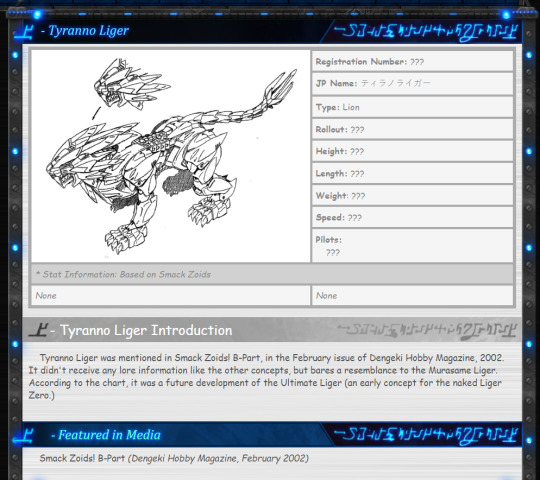
I don't have anything to add, I just know nothing. I seems to link directly back to the Ultimate Liger, so maybe it was intended to be an Imperial Zoid?
And last & absolutely least:

Yup. A CAS that concerts the Liger Zero into a buffed Shield Liger. It just doesn't thrill or interest me, even though I won't deny it's versatility.
#zoids#zoid#smack zoids#concept art#mecha#mecha art#anime and manga#wild zoids#buster liger#liger zero buster#liger zero#shield liger#Blade Liger#Tyranno Liger#Liger Zero EM#Liger Zero X#Liger Zero Phantom#Wild Liger#<3#King Liger#King Baron#Zenebas Empire#Helic Republic#lore#Planet Zi#Lidier
5 notes
·
View notes
Text
vimeo
1978 EPCOT Center Presentation
Epcot Legacy description:
If you were to ask even the most avid of Epcot fans exactly how many films were produced before the park's premiere, almost everyone would respond quite confidently with a single film. 1966's "The EPCOT Film" although the first*, was only one of several (!) Epcot Films made over the developmental history of the Florida Project. The following is an enhanced & color-corrected print of the 1978 presentation depicting the park midway through its evolution from the City to the Center in what I refer to is as the "Gold Dome" phase.
Among the many interesting aspects of this film, is a preamble to the primary presentation of the park featuring a plethora of prototype systems already in use at Walt Disney World, as well as the EPCOT "support programs" such as the shortly-lived Epcot Educational Media division of the studio. Finally, Card's impassioned plea to find solutions to the problems of a very real world establishes a very strong connection between Walt's EPCOT and Walker's Center. From 1978, written by Marty Sklar here is EPCOT Center…
#walt disney#walt disney world#epcot#epcot center#vimeo#youtube#epcot legacy#1978#1970s#Vimeo#wed enterprises#imagineering
2 notes
·
View notes
Note
Hi there was a playlist attached to one of your fics on ffn.net, I tried to find it today but it looks like your fics there are deleted :( do you still happen to have the playlist somewhere? I understand if you have moved on from that era of your digital footprint.
oooooh interesting! it does initially look like that everything is gone, but somehow i managed to. work around it??? and get back in there??? so i have access to everything and i am gonna. likely back everything up for posterity's sake. not sure where????? but i likely should re-upload all my really old writing somewhere. maybe orphan it on AO3 ?????? ?? idk i gotta think about it. so thanks for the head's up actually.
i have def moved on from some of it in the sense that i wrote those stories as an extremely unstable mentally ill teenager with a laundry list of diagnosed mental/developmental disorders that i should have been institutionalized for that was deeply traumatized by a lot of things and trying to sort it all out. it was def a project of the times and my mental state/being a Youth. so i am not completely removed from it (why i left everything up -- writing helped me figure stuff out, but also helped a LOT of other people struggling with those same things, and that's what matters most to me, that i helped somebody who is struggling as deeply as i was back then, even if i've changed my interpretations of things since and would drastically re-write entire aspects of it if i re-wrote it today). and the way i view my writing is once it is in the public space it is no longer fully mine and my intent behind it is on the same level as another person's interpretation of my intent. i don't really remember what i write after i write it ngl, so it ceases to feel like it is fully mine to me once it's been a few months.
ANYWAY rambling sorry my Assumption is that you are talking about Silence??? In which case, here is the soundtrack,
Song - Band - any special time I used the song specifically
Springleik - Gåte - Negative: Switch (Chapter 1)
Curtigh - Punch Brothers - Positive: Siblings (Chapter 13)
Packt Like Sardines in a Crush'd Tin Box - Radiohead - Negative Vault (Chapter 18)
The Blind Leaving the Blind Mvt 2 - Punch Brothers - Denmark-centric chapters
Fljótavik - Sigur Rós - Positive chapters
Built For This - Ben Sollee - Positive: Every (Chapter 23), Iceland-centric
And the Forest Began to Sing - Röyksopp - nature-centric chapters
Singing with the Whales - Yukimi Yamamoto - Negative: Ships (Chapter 26)
3055 - Ólafur Arnalds - negative chapters
Fel del Av Gården - Movits! - Positive: Siblings (Chapter 13), Positive: Hidden (Chapter 7)
Tornado - Jónsi - negative chapters
Everything Can Explode - The Ghost - positive chaoters
Brand New Sidewalk - Nickel Creek - Neutrality: Equilibrium
Little Talks - Of Monsters and Men - general theme
You Are - Punch Brothers - the song Denmark sings in Positive: Skype (Chapter 25)
i also remade it for you here:
Youtube Playlist (says there is one thing missing for some reason?)
Spotify Playlist (unfortunately missing a few songs too)
also spoilers under cut for a new project i am going to be working on in the near future below b/c it is relevant to Silence, if Silence was important to you.
the next project i am going to write is a direct sequel to Sendlingur og Sandloá (era 2 pyrr writing, versus silence is era 1, we're currently beginning era 3), if you have ever read it.
technically speaking, the few main things I still really like about Silence (unusual non-linear narrative structure, nor being mute, some of the philosophic arguments it makes, etc) and some of the events of Silence are "canon" prequel events to what happens in SOS. Silence isn't a prequel to SOS, but Silence is essentially the prototype version of SOS in that without Silence, SOS would have never existed and SOS was directly built upon Silence's corpse. i mean death of the author and all of that, but there isn't any denying that if you analyze the two works i think that is a very easy conclusion to come to.
the new project i'm currently formulating is essentially taking SOS and those aspects of Silence i think are still valuable now that i am nearly twice as old as when i wrote it, and putting them both into a blender and seeing what happens when i reconstruct them. you will not have to read Silence or even SOS to read it, but if you have read either or both you'll go AH YOU MOTHERFUCKER at me, probably, a lot, when reading it. :/
ANYWAY SORRY FOR RAMBLING i am a ramblin sort of man lol.
#pyrrhocorax ask#i have a lot of mixed feelings on silence b/c some aspects are harmful to me now but others are very Real. but i also don't want to#pretend it wasn't a part of my past b/c it is only by understanding where you come from that you can understand the present and the future#it's ok to be young and filled with unbridled pain and use that to make some weird art to cope. shouldn't pretend it's not part of all of u#we've got to be WAY gentler and loving and honest about the human condition i think for the sake of all of us. anyway gonna stop rambling n#w. the w alone is mking me laugh. i need to go back to bed (i won't) lol.
2 notes
·
View notes
Note
🍈
🍈 Who’s your blorbo and what are some of your favorite headcanons/ideas about them that repeatedly show up in your fics? Free pass to rant about blorbo opinions.
this will surprise absolutely no one but elisabet sobeck from the horizon video games series is my current blorbo and very likely promoted to Forever Blorbo status due to the things i am currently experiencing in my life right now that make her VERY relatable to me
to be honest, elisabet is most interesting to me as a genuinely good, altruistic person who is also deeply flawed. she's compassionate, often selfless, and brave...and also kind of an asshole! she can be very harsh, not only to people antagonizing her but also to people who want to be her friends or loved ones. she's honest, but also sometimes blunt to the point of being unkind. she lashes out when under stress. and she very, very much pushed people away in her life and ended up dying alone 😭 her genius isolated her, but she also did partially cause some of her own loneliness
i am most interested in exploring elisabet as this complex person. it is very important to me in my lis lives fic choosing life that it NOT be the case that lis comes in and fixes everything. her presence absolutely helps aloy in plot and emotional ways, but also causes its own problems! and aloy still needs to save the world (poor kid).
it is also my deeply held and beloved headcanon that going to college at 12 was ABSOLUTELY the thing that most fucked elisabet up emotionally. she was smart enough for the academics no problem, but you just don't recover well from the amount of damage not having a peer group your age at that developmental stage brings. i think THAT is a big part of why elisabet was so isolated and cut off from others emotionally
my other beloved, less deeply held headcanon was that elisabet basically illegally developed gaia in her basement pre-zero dawn. i just really like her being a rogue AI programmer and having a gaia prototype before zero dawn gave her the legal green light! i wrote the fic theogony about that concept
thank you for sending me the ask i could talk about elisabet FOREVER!
7 notes
·
View notes
Video
Lockheed XF-90A 46-0687 by Wing attack Plan R
Via Flickr:
The Lockheed XF-90 was built in response to a United States Air Force requirement for a long-range penetration fighter and bomber escort. The same requirement produced the McDonnell XF-88 Voodoo. Lockheed received a contract for two prototype XP-90s (redesignated XF-90 in 1948). The design was developed by Willis Hawkins and the Skunk Works team under Kelly Johnson. Two prototypes were built (s/n 46-687 and -688). Developmental and political difficulties delayed the first flight until 3 June 1949, with Chief Test Pilot Tony LeVier at the controls. Performance of the design was considered inadequate due to being underpowered, and the XF-90 never entered production. Design and development: In response to a 1945 Army request for an advanced jet fighter, Lockheed proposed a jet powered initially by a Lockheed L-1000 axial flow turbojet, and then the General Electric J35. Further design refinements included using two Westinghouse J34 engines with afterburners. After data showed that a delta planform would not be suitable, the Lockheed Model 90 was built in 1947 as a mock-up. The final design embodied much of the experience and shared the intake and low-wing layout of the previous P-80 Shooting Star, but with 35° sweptback wings, a sharply-pointed nose, and two Westinghouse J34-WE-11 axial-flow turbojet engines, providing a total thrust of 6,200 lbf (27.6 kN), mounted side-by-side in the rear fuselage and fed by side-mounted air intakes. The wings had leading edge slats, Fowler flaps, and ailerons on the trailing edge. The pressurized cockpit was fitted with an ejection seat and a bubble canopy. Proposed armament was six 20 mm (.79 in) cannons. The internal fuel was supplemented by wingtip-mounted tanks, bringing total fuel capacity to 1,665 gal (6,308 l). The use of 75ST aluminum rather than the then-standard 24ST aluminum alloy, along with heavy forgings and machined parts, resulted in an extremely well-constructed and sturdy airframe. However, these innovations also resulted in an aircraft with an empty weight more than 50 percent heavier than its competitors. The first XF-90 used non-afterburning J34s, but these lacked the thrust for takeoff as rocket-assisted RATO were required for most of the first flights unless it carried a very low fuel load. The second (XF-90A) had afterburners installed which had been tested on an F-80 testbed. Even so, the aircraft remained underpowered. Testing and evaluation: The XF-90 was the first USAF jet with an afterburner and the first Lockheed jet to fly supersonic, albeit in a dive. It also incorporated an unusual vertical stabilizer that could be moved fore and aft for horizontal stabilizer adjustment. Partly because Lockheed's design proved underpowered, it placed second to McDonnell's XF-88 Voodoo which won the production contract in September 1950, before the penetration fighter project was abandoned altogether. Upon Lockheed losing the production contract, the two prototypes were retired to other testing roles. The first aircraft (46-687) was shipped to the NACA Laboratory in Cleveland, Ohio in 1953 for structural tests. It was no longer flyable, and its extremely strong airframe was tested to destruction. The other (46-688) survived three atomic blasts at Frenchman Flat within the Nevada Test Site in 1952. Notable appearances in media: The XF-90 lived on as the aircraft flown through the 1950s by the popular Blackhawks Squadron in the comic book series of the same name, first published by Quality Comics and later by DC Comics. The Blackhawks flew fictional "B" and "C" models, single engine production variants of the twin-engine XF-90. Aircraft disposition: 46-0687 – tested to destruction at NACA lab in Cleveland, Ohio. 46-0688 – in storage and awaiting restoration at the National Museum of the United States Air Force in Dayton, Ohio. In 2003, the heavily damaged hulk was recovered from the Nevada test site and moved there. It is currently undergoing minor restoration in one of the Museum's restoration facility hangars. Its wings have been removed, and its nose is mangled from the nuclear blasts. During the decontamination process, all the rivets had to be removed to remove radioactive sand. At present, the museum plans to display the XF-90 in its damaged, mostly unrestored condition, to demonstrate the effects of nuclear weaponry. (wiki)
2 notes
·
View notes
Text
the point of the gifted kid thing is that like the american school system fucks EVERYBODY up, just in different ways. it's not like schools did figure oit how to be good to kids and then just choose to be good to the kids that fit its expectations of intelligence. where they got more compliments and more resources, they also got literally pulled away from social groups and were told they were being prepared for future schooling when they were pretty much getting the opposite. there is not a single type of student in an american school who's not getting either used or thrown aside by the system. sometimes both! some groups absolutely have it worse, i would say developmentally disabled students are the worst affected by the system and the prototypical Popular Student Council Kid Who's Also A Cheerleader is affected the least, but there's not a single person who benefits. football kids? they're being raised to expect that their life will never get better than the time where their whole worth is put on how often they get brain injury so the sports administrators can make more money. depressed kids are ignored to the point where the only thing they're getting out of school is bullying. everyone is getting an amount of homework that's actively harmful. and then that helps determine your future success, so it's either spend every waking moment of your developing years focusing on that work or get fucked. (sometimes both!) when i was pulled away for the first 4 years of elementary every time we did math or lamguage arts and i had to work in a different room alone because i was "better" at it however they measured it, that was not nearly as bad as when more visibly disabled kids were kept aside the whole day, to the point that other students considered them entirely seperate and never learned to accept them. but just because it wasn't as bad doesn't mean that i never learned how to suppress the urge to talk to myself and there are something like 20 kids on my college campus who don't give me dirty looks for no obvious reason. the only advice i ever got on my diagnosed social anxiety was when a G/T teacher told me to "study the other kids like an alien culture". even students you dont see getting fucked up by the system are, even the ones with preferential treatment. there needs to be something ENTIRELY DIFFERENT in place, not just in some ways
5 notes
·
View notes
Photo

Project: CLOUD is a developmental android produced by Shinra. Designed with the purpose of pushing the boundaries of Artificial Intelligence and learning based on his experiences.
On top of this, Project: CLOUD is able to eat and drink and is a medical prototype for artificial taste.
There have been multiple prototypes of this project but CLOUD was different in that the Research Department actually managed to create artificial curiosity. Before, androids needed to be given a task and they would do it with perfection; whereas CLOUD was capable of making mistakes and needed to be taught which seemed to be in the right step of creating an android that’s as close to a human as possible.
Conflict arose when Reeve Tuesti, CLOUD’s assigned owner at the time, found out about Heidegger wanting to reuse the likeness and skills of former SOLDIERs and making them into androids to dissuade the rumours of cell degradation – Thus creating a powerful and obedient army. The idea was to essentially gut CLOUD’s entire build and to recycle what they had done, Reeve protested that this had the possibility of reversing everything that they had achieved as CLOUD’s curiosity wasn’t purposely made – It was a fluke and they didn’t know how to replicate it.
With talk of androids like CLOUD being able to possibly help those less fortunate in Midgar, Heidegger’s plan seemed to uproot that entire idea.
This conflict of interests angered the research department and after much arguing Hojo simply scrapped the project; believing androids and this whole conflict to be a distraction from other projects he had in mind. They had Chadley after all, so androids can wait as long as they could produce cyborgs. CLOUD was literally thrown away into the sector 7 scrapyard; with his AI so fragile and unable to comprehend the abandonment he suffered a fatal error and shut down to protect himself.
The next time he would reboot, a system restore would erase his memories and set him back to his default settings. With a basic manual in android care, multiple spoken languages and sword fighting skills, Project: CLOUD knows nothing but still retains his curiosity.
Perhaps he will learn autonomy and become human or will he be bound to an owner forever?
#Becoming Human; Android AU#//this isn't related to DBH because I haven't played it#//I just like the tagline--
7 notes
·
View notes
Text

Article: Could there soon be digital copies of your heart? #BBC https://www.bbc.com/reel/video/p0hnb26m/could-there-soon-be-digital-copies-of-your-heart-
Article: Barcelona Startup Creates 3D Models Of Diseased Hearts Using High-Performance Cloud Computing #Forbes https://www.forbes.com/sites/oracle/2019/03/06/barcelona-startup-creates-3d-models-of-diseased-hearts-using-high-performance-cloud-computing/
ArticleSummary: "The goal is to get a virtual heart that is as close as possible to the diseased heart of the patient. ELEM grew out of work done at the Barcelona Supercomputing Center and is now using cloud-based high-performance computing from Oracle in hopes of bringing those models to everyday use by doctors and the healthcare industry. ELEM runs a version of Alya Red on Oracle Cloud Infrastructure’s Bare Metal Instances, which gives the company full control over the hardware, software, and infrastructure—and doctors can use the software with no queuing."
By #www.smukher2.com #www.smukher2.eu #www.smukher2.co.uk #www.smukher2.org #www.smukher2.net #smukher2 to #Everyone:
A digital twin of the heart is like a "complicated heart" from the MLTR song. Let's break down this idea to understand it better.
A digital twin is a virtual model that copies a physical system. It lets us simulate, predict, and improve things without needing real prototypes. These twins can be simple or complex, using tech like machine learning to give insights. NASA first came up with digital twins, and now we have different kinds, from basic copies to intelligent ones that learn and make decisions on their own. In healthcare, they help with personalized medicine, running hospitals, and planning clinical trials. With AI, the Internet of Things (IoT), and sensors, digital twins are growing in many fields. In medicine, they're helping with precise treatments for diseases like cancer and improving how we make decisions for patients.
The article talks about making a digital copy of the heart. The central idea is that DNA makes RNA, which makes proteins. Proteins do important jobs in cells and organisms, like humans or mice. They act as enzymes and cause reactions that lead to what we see, called the phenotype. To understand diseases, which are bad phenotypes, we need to know about the organism at all levels. This helps us find treatments. For years, scientists have studied DNA, RNA, proteins, and phenotypes using animal models, cell cultures in 2D and 3D, and getting data like ECGs, blood pressure, genetic sequencing, and MRI images. But why do we need digital twins now? Well, these animal models and cultures give us lots of useful data. However, a digital twin combines all this data. It's tough for people to analyze all this info, but computers, especially with AI, can handle and study it easily.
Modeling the heart helps us understand how diseases change it compared to healthy hearts. These models have been used to figure out how the heart works and doesn't work in sickness, and to create treatments. Models can be based on animals, human cells in 2D, or organoids in 3D. When we collect data over time, we add the dimension of time, making it 4D. Now, we have tons of data from genomes, health records, wearable devices, and various imaging techniques. Computers and AI can manage and analyze this big data. So, we turn it digital, creating a digital twin of a patient's data.
The Human Cell Atlas made a Heart Cell Atlas with gene expression data from adult human hearts. Researchers used special techniques to look at the cells in different heart areas. They found unique cell types and genes in each region. Although the Atlas shows this in 3D, it's presented in 2D, and you can't view it in full 3D online. The Allen Brain Atlas, however, offers both adult and developmental data for mouse and human brains in 3D. Understanding development is key for studying diseases in organs like the heart and brain.
In these 3D maps, or atlases, you see where different cells are, plus the fourth dimension of age and the fifth dimension of gene expression. Imagine adding even more data, like EEGs, blood pressure, MRI images, and gene-protein binding. The Cardiac Atlas Project is a database with cardiac images for research and education. If you mix this with the Heart Cell Atlas's gene data, you get a 5D digital twin. Adding dimensions bit by bit will help build a complete digital twin of organs like the heart or brain. These twins can teach us about the organ and predict how drugs will work, making them super useful.
Digital twins in healthcare are changing things big time. They help hospitals work better, design medical stuff, plan surgeries, run virtual clinical trials, and give care just for you. They also help find new drugs and ways to check for diseases. Digital twins for wellness are also popping up to help people stay healthy and get care that fits them perfectly. Digital Twins for health rely on extensive health data of a human being, including sensitive personal health information. Strict measures must be in place to ensure patient privacy, data encryption, secure storage, and compliance with relevant data protection regulations.
References:
3D interactive Heart gene expression by location https://3d-cardiomics.erc.monash.edu.au
3D interactive Heart MRI by location Cardiac Atlas Project and UK BioBank https://www.cardiacatlas.org/biventricular-modes/
3D Interactive Brain gene expression by location https://atlas.brain-map.org
Human Cell Atlas https://data.humancellatlas.org
Heart Cell Atlas https://www.heartcellatlas.org
3D-cardiomics: A spatial transcriptional atlas of the mammalian heart - Journal of Molecular and Cellular Cardiology #Elsevier https://www.jmcc-online.com/article/S0022-2828(21)00190-5/abstract
Allen Reference Atlases :: Atlas Viewer https://atlas.brain-map.org
Cardiac Atlas Project https://www.cardiacatlas.org
"Complicated heart" quote from the Michael Learns To Rock (MLTR) album 'Greatest Hits Strange Foreign Beauty' https://genius.com/Michael-learns-to-rock-complicated-heart-lyrics
0 notes
Text
3D-Further Research for the Communication Cubes
While my 3D is a work in progress in collaboration with the Rapid Prototype Studio, still I decided to revise some of the ideas that I had to incorporate tactile elements with the visuals that will be engraved onto each side of the blocks. As I progressed further into my pieces (3D, experimental, and reflective), I started to develop an awareness of other disabilities that are related to my own, including sensorineural hearing loss, conductive hearing loss, profound hearing loss, deaf-blindness, and visual impairment. Each of these disabilities is distinctive yet related in the way that they share the importance of understanding the relationship between sound and written language- whether that is through sign language, lip reading, or braille to develop literacy through other present senses of the body.
The article below provided some inspiration for how I can make the communication block more engaging, while also providing an alternate learning experience. Magnets and velcros have vibrating and textual characteristics that are vital for individuals with disabilities relating to hearing or visual impairment to develop fine-motor and observational skills
0 notes
Text
Platformer Development Post #3
Last week I began to learn how to develop a rudimentary platformer in class. This week I learned much about the process of Playtesting and receiving feedback. Unfortunately my platformer was in a very rudimentary form at the time, and so I got rudimentary feedback that nonetheless proved extremely helpful. Namely, that for the playtester, having snappy collision boxes and responsive controls was a must.
Taking this into account, I dove into working. Given my elevator pitch - Starman - was also a platformer, I decided my prototype would try to hit the key parts of the elevator pitch - Space and Superheroes. To start off, I used a fantastic image created by X user @norma_2d in this post for my background:

Following that I downloaded a series of free pixel asset packs from CraftPixel to fit my theme - of which consisted of a punk sprite and a spacecraft pack. Teaching myself how to use SpriteSheets, I spliced them in Gdevelop and got to work, leading to the following;

The changes and additions I made consisted of: Setting the controls to WASD; Adding explosive death animations; Adding the ability to shoot a (deadly) bolt of light; Adding a glow effect; Adding punching, running and jumping animations.

While creating these, I ran into several developmental hiccups, namely managing the collision and points of my animations - a key point of feedback. There was initially a lot of clipping and animations appearing to teleport several dozen pixels away from where they should be. After tweaking settings for animation origins and centers, along with adding collision maps this was solved. Once done this allowed me to focus on fixing several code problems such as ships being deleted by projectiles before exploding - something requiring a simple variable and check.
These problems I encountered hammered home for me that there is many aspects of designing a game that you only notice when they cause problems in development - aligning animations and the order of animations was not something I'd ever considered going into this week.
0 notes
Text
Why Is Concept and Strategy Development Vital in Mobile App Creation?
Transitioning from conceptualization to realization is a pivotal undertaking that lays the groundwork for triumph. Visual basic programmer use meticulous concept and strategy development as a compass to ensure successful development. Let’s understand five of the indispensable constituents of this developmental approach in this article:
Identifying and Satisfying User Requirements
Knowing your user requisites inside and out is crucial in mobile app development services. Developers can perform rigorous research, solicitation of user feedback, and meticulous assessment of industry dynamics. Good developers can increase user happiness and engagement by putting themselves in the shoes of users and learning the pain points of the users.
The Objectives of the Company
Mobile applications stand as potent assets for businesses, transcending mere convenience for operations. You can work with a service provider who can connect the app’s objectives with larger company goals through the formulation of robust concepts and strategies. A well-defined plan makes sure the app is useful and helps the company succeed, whether that’s by generating revenue, making the brand more visible, or making customers more loyal.
Establishing Specific Goals and Metrics for Success
The app development industry is a wild place, and it mandates utmost clarity and precision. Your IT consulting provider can set measurable goals and success metrics with the help of concept and strategy development. A custom development service provider can help monitor progress, pinpoint problem areas, and make data-driven decisions at every stage of the development process.
Reducing Risk and Enhancing Return on Investment
Conceptualization and strategization play a pivotal role in risk mitigation by revealing possible obstacles, competitiveness in the market, and some other technological limitations at an early stage. Developers can effectively and economically manage resources by performing comprehensive studies and prototyping to minimize uncertainty and increase return on investment (ROI).
Establishment of a Robust Development and Design Framework:
The development of a successful mobile app begins with the formulation of ideas and strategies. Providing a framework that directs each choice and iteration establishes the tone for development and design. Developers may accelerate the design and development process, decrease time-to-market, and guarantee a unified end product.
About Keene Systems, Inc.:
Keene Systems, Inc. provides complete custom development services from concept to formulation and aftercare services. Keene Systems focuses on .NET development, microsoft net developer, mobile app development, and related IT services.
Get in touch now by visiting https://www.keenesystems.com.
Original Source:- https://bit.ly/49T6t7B
0 notes
